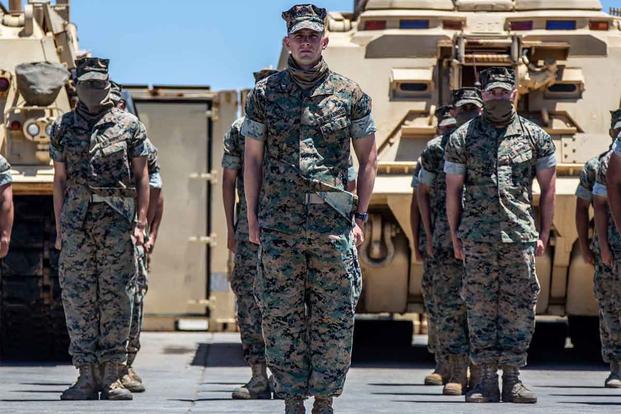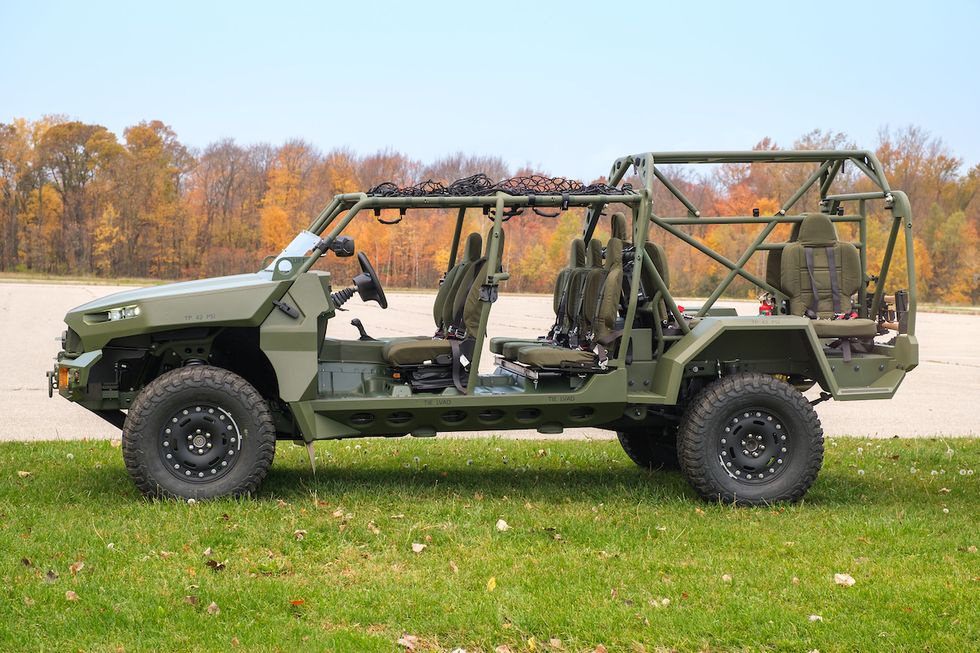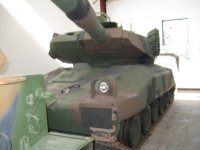What happens if you take a standard issue MGS - Stryker? Take all the armour plate and self-defence stuff off it, except, perhaps for an armoured cab with occupancy for two? The cab is occupied during road moves. The crew (commander and driver/operator) dismount at a safe distance from the enemy and then remotely manoeuver their Self-Propelled Anti-Tank Gun with its Auto-Loader into battery. And retires the SPATG after firing. With or without tracks.
As a gunner my experience with armoured warfare is limited (albeit having taken part in thirteen live fire battle runs with German Leo/Marder battle groups in Shilo, perhaps more than the average guy's)
Based on that limited experience I really don't think that your suggestion fills the bill, but not so much because of the concept but the basic doctrine itself. Long story short is that the Stryker (and the MGS) was not designed, nor intended for a high intensity battlefield. When developed at the turn of the century it was a middle option that provided "some" protection and mobility to what was in essence a light infantry force. It filled a gap between the light infantry brigades and the armoured brigades. Unfortunately, Canada only has this medium "interim" force as it's basically all singing and all dancing "full spectrum" army (Thank the stars for the serendipity of Afghanistan that saved a remnant of our armour capability despite all efforts to destroy it - I wish the same could have been done for the M109s and ADATS - if only the Taliban had learned how to fly suicide planes).
The question isn't whether we add or subtract parts and people, the question is what is our overarching doctrine for fighting a high intensity war. Once you have the doctrine, the components and the methodology falls into place. You need to do the same exercise for low and mid intensity conflicts to see what elements transfer between doctrines and which need components all of their own. In essence, this is why the Americans have ABCTs, SBCTs, IBCTs, Marines, and various add on components such as intelligence brigades, artillery brigades, air defence artillery brigades, sustainment brigades, manoeuvre enhancement brigades, divisional headquarters and corps headquarters. It's to have toolboxes that you can draw on with their own respective doctrines which will allow you to meet varying threat levels.
We dabble in doing that at a lower scale but there are some things that simply won't work. A LAV will never be a Bradley even if we hang a TOW on it. You can't cobble together an armoured battlegroup or brigade even if you have some tanks if it doesn't have a sound maintenance and supply system behind it nor proper artillery and air defence support.
Is there a conflict scenario where LAVs and MGSs would be of value. Probably BUT: forget about the idea of a rapid deployment of the force to a hot spot. We don't have the lift to do that (and for that matter, the Americans found that with all their resources they too couldn't deploy their SBCTs and division like they wanted to either) More importantly, I can't think of a scenario for Canada where we would deploy a medium weight force which would be expected to fight, rather than just defend itself in an extreme situation. I think we've had just about enough of this failed state fairy tale which was our "Future Force (2003) - Three Block War" transformation scenario. We need to get real serious about where we may "have to fight" rather than where we might choose to dabble and structure our doctrine for that.
The Marines have chosen and are building towards a new doctrine and a corresponding force structure. I think that's a real wise move. If nothing else it should provide a decent deterrent. The Chinese, however, are masters at pushing the envelope. I would think that the US Navy and Marines need to develop sound strategies and tools which will allow them to draw lines in the sand and enforce them.
As for Canada. I think we too have chosen the moment when we committed to both Latvia and the Ukraine. That's hard to draw back from without loosing major political face with Europe and the US. It's time we threw "Advancing with Purpose" into the dustbin where it belongs and build a new doctrine from scratch or adopt one from a more successful and invested nation.


 www.military.com
www.military.com






